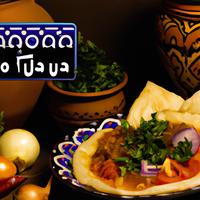
1 serving (150 grams) contains 300 calories, 5.0 grams of protein, 10.0 grams of fat, and 50.0 grams of carbohydrates.

Log this food in SnapCalorie

Nutrition Information
Calories |
473.2 | ||
|---|---|---|---|
% Daily Value* |
|||
| Total Fat | 15.8 g | 20% | |
| Saturated Fat | 3.2 g | 16% | |
| Polyunsaturated Fat | 0 g | ||
| Cholesterol | 0 mg | 0% | |
| Sodium | 473.2 mg | 20% | |
| Total Carbohydrates | 78.9 g | 28% | |
| Dietary Fiber | 1.6 g | 5% | |
| Sugars | 1.6 g | ||
| protein | 7.9 g | 15% | |
| Vitamin D | 0 mcg | 0% | |
| Calcium | 31.5 mg | 2% | |
| Iron | 1.6 mg | 8% | |
| Potassium | 78.9 mg | 1% | |
* Percent Daily Values are based on a 2,000 calorie diet. Your daily values may be higher or lower depending on your calorie needs.
Food Attributes
Source of Calories
About Tahdig
Tahdig is a traditional Persian dish known for its crispy, golden crust typically formed at the bottom of a pot of Persian-style steamed rice. The base ingredients include long-grain rice, oil or butter, and often yogurt or saffron for additional flavor. Variations may incorporate thin bread or potato slices to enhance the crunch. Originating from Iranian cuisine, Tahdig is celebrated for its unique texture and rich taste. While Tahdig is high in carbohydrates due to the rice base, it can provide energy and essential nutrients, particularly if made with high-quality oils and enriched with saffron's antioxidants. However, the cooking process, which often involves frying, can lead to higher calorie and fat content, potentially making it less suitable for those monitoring fat intake. Moderation, along with pairing Tahdig with nutrient-dense accompaniments like vegetables or lean proteins, can help balance its indulgent nature.



